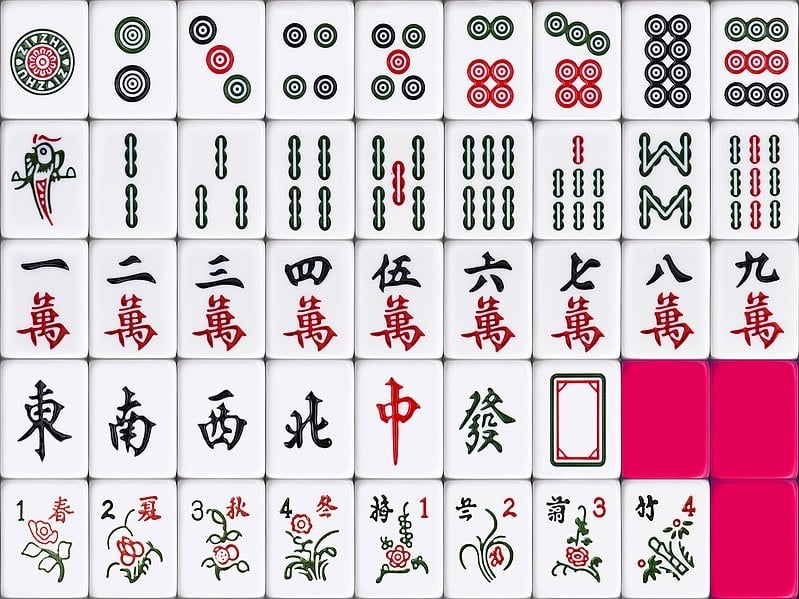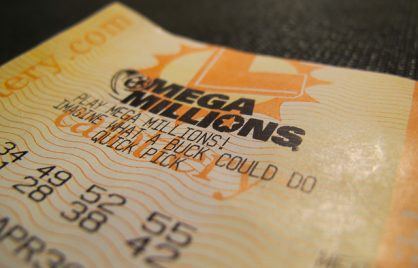Learn How To Play Mahjong For Beginners: An Easy-To-Follow Tutorial
Mahjong is a tile-based game where each player aims to be the first to make four sets and one pair of tiles. A pair is any two of the same tile. A set is a Pung (three identical tiles), Chow (three same-suit tiles), or Kong (four identical tiles). Failing this, you can win by gaining more points than your opponents. Skip to:
- The Basic Rules Of Mahjong
- Understanding Mahjong Tiles
- How To Play Mahjong – Step by Step
- How To Win Mahjong
- How To Play Mahjong With 2 Players
- How To Play Mahjong With 3 Players
The Basic Rules To Play Mahjong
- There are four players in a standard game of mahjong.
- It is played with 144 numbered tiles with different depictions: 36 bamboo, 36 circles, 36 characters, 16 wind, and 12 dragon.
- Dice are used to determine the dealer and then by the dealer during gameplay.
- The goal is to make four sets and one pair of tiles before any other player. It is the concept as making winning hands in poker.
- A pair is simply any two of the same tile. A set is a Pung (three identical tiles), Chow (three tiles of the same suit), or Kong (four identical tiles).
- No tile can be used more than once in a set.
Understanding Mahjong Tiles

While 144 tiles were traditionally used – including 8 bonus symbols (4 flowers and 4 seasons) – most games use 136 tiles without bonuses. In a game of mahjong, the following tiles can be in play:
Row 1: Circles
Also known as dots, there are 36 circle tiles (four identical sets of nine tiles). Circles have up to nine circles on them and are known as 筒子tǒngzi in Chinese.
Row 2: Bamboos
There are 36 bamboo tiles (four identical sets of nine tiles). Known as 竹zhú in Chinese, the first bamboo is usually a bird symbol, and the rest are stick bamboo.
Row 3: Characters
Character tiles are another group of 36 tiles (four identical sets of nine). They depict the numbers 1 to 9 in Chinese with the Chinese word for character – 万 wàn – also on the tile.
Row 4: Dragons/Winds
There are 16 wind tiles (four identical sets of four tiles). Each set of four represents the directions (east, south, west, and north). Wind tiles – or 风牌 Fēngpái – always follow this order.
There are 12 dragon tiles (four identical sets of three tiles). They depict red, green, and white dragons. Known as 三元牌 Sān yuán pái in Chinese, the dragon symbols are their relative colors, although white dragon tiles may be blank.
Row 5: Flowers/Seasons
There are four flower and four season symbols that are bonus tiles in some mahjong variants. It is important to know about them when learning how to play Chinese mahjong, even if they are not in your variant.
How To Play Mahjong – Step By Step
Once you know the tiles and general rules, you have nearly mastered how to play mahjong online and in person! Now let’s look at the gameplay:
Set Up The Game
- The dealer shuffles and deals one wind tile to each player. This determines where the players sit clockwise in relation to the symbol (north, west, south, east). Some games use the dice to decide which of the players is the dealer.
- All mahjong tiles are shuffled at the same time, and each player constructs a “wall” of 34 tiles facing down. A wall must be 17 tiles long and two tiles high. If you play online, all this happens automatically, and you won’t need to build yourself.
- Now, the dealer rolls the dice to determine where to start dealing tiles from the “wall” of stacked tiles. The number rolled on the dice corresponds to a certain spot on the wall, counting from the right side. This introduces an element of randomness to the tile distribution.
- Then, the wall is separated (“breaking the wall”). The dealer will now deal tiles clockwise to the players from the left of the split in the wall. Each player gets 13 tiles, but the dealer gets an extra 14th tile.
- Players can then organize their tiles facing towards them and out of sight of other players.
Discard And Pickup Tiles
- The dealer now discards a tile and play starts from the player sitting to the right of the dealer.
- The first player draws a tile from the wall and discards one, aiming to create a winning combination or “meld”. The next player does the same, and so on.
- Each tile that is discarded can be claimed by a player to help them make a winning meld of 14 tiles.
- If no player claims the discarded tile, the next tile from the open side of the wall is taken.
- Like before, if this tile does not help, discard it and continue playing.
- Once a player makes a pair and four sets of tiles, they call “Mah Jong” and win the game.
How To Win Mahjong
To win in mahjong, you must be the first player to make one pair and four sets of tiles. There are three basic tile sets:
- Pung: Three identical tiles of any kind, such as 3x Green Dragons.
- Kong: Four identical tiles of any kind, such as 4x Two Circles.
- Chow: Three consecutive tiles of the same suit, such as 4-5-6 of Bamboo.
Once you’ve collected the necessary tiles, you call “Mah Jong” and win the game. If you do not get four sets and a pair, you can also win by gaining more points than your opponents.
Points In Mahjong
- A Pung gets two points if it’s exposed or four if concealed.
- A Pung of 1s and 9s, dragons or winds gets four points if exposed and eight if concealed.
- A Kong gets eight points if exposed and 16 if concealed.
- A Kong of 1s and 9s, dragons or winds get 16 points if exposed and 32 if concealed.
- A flower or season gets four points.
- A pair of dragons or winds gets two points.
- Chows offer no points but help to build a meld that could be a winning 14-tile set.
How To Play Mahjong With 2 Players
Mahjong is a four-player game, but it can also be played by two players. Instead of tweaking the game’s rules, two-player mahjong simply gives players two racks of tiles to play, and they need to win both. In other words, it merely doubles everything, and one player assumes the position of two players.
So, you build two walls and attempt to make Mah Jong two times. In some two-player variants, there are no walls, and players just take shuffled tiles from the middle of the table. Either way, all gameplay matches standard mahjong aside from one player getting 27 tiles and the other (dealer) getting 28 tiles.
How To Play Mahjong With 3 Players
Learning how to play mahjong with three players is easy but does not follow the same principle as two-player mahjong. Instead of doubling up everything for players, three-player mahjong has exactly the same gameplay as standard 4-player variants. Four walls are still built as normal, but the dealer will only deal tiles to the three players. In other words, one wall is essentially vacant, and gameplay starts from East instead of North.
Discover more easy-to-follow game guides here.


